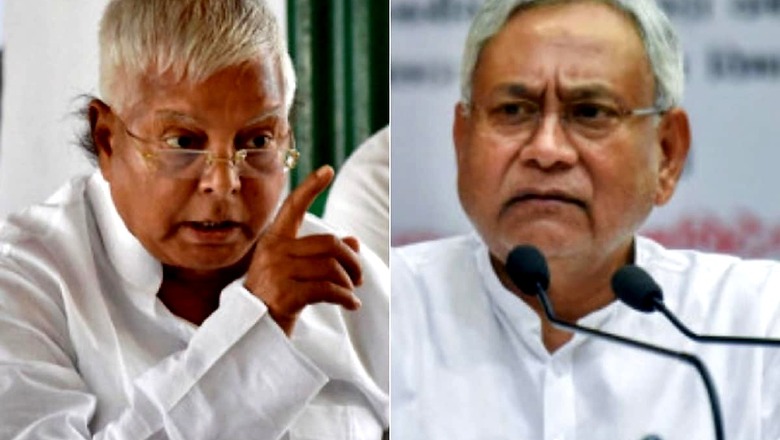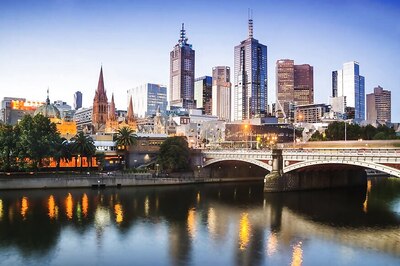
views
No matter which party is in rule, the Other Backward Class, or OBC, as a community leads the politics in Bihar. OBC and EBC together form more than half of the population of Bihar. The Yadav, Kurmi, Koiri, Kamar, Badhai, Kanoo, Godhi, Gangota, Kahar are the important OBC communities residing in Bihar. These communities were on the margins of the state’s politics for a long time. Slowly, they acquired the capacity to be assertive and became the political nucleus of the democratic power and governance in the state.
The eminent novelist Phanishwar Nath ‘Renu’s’ story ‘Panchlight’ describes their struggle for acquiring social dignity and democratic capacity. In the story, the author highlights the time of the 1960s in which one OBC Patti village wanted to assert itself in the forward caste dominant social sphere by forming its own caste-based kirtan group. So, they bought a Panchlight (Petromax light) from the nearest district town. But when they sat in a group to start kirtan, no one among them knew how to burn the Petromax. The story narrates their effort to burn the Petromax. After a long struggle they succeeded at it and formed their own caste-based singing group. So, now they have acquired the skill to use the Panchlight of democracy to light up their own politics
It is interesting to observe that in the Congress politics in Bihar between 1930-50, their representation was minimum. They were mostly Raiyyats and some of them were artisanal communities. In the social sphere they had little dignity. In the 1930s, they launched a very assertive social campaign to acquire social dignity, called the ‘Janeu Movement’ and started using Kshatriya titles. They formed the Triveni Sangh in 1933 as an organisation of numerically the three-most important backward castes: Yadavas, Kurmis and Koiries. But under the leadership of a leader born in these three castes, many more OBC clans rallied around this new political assertion against their marginalisation under Congress politics.
Leaders like Ganpati Mandal, Dhasu Singh, Tapasi Ram Mahato, etc, emerged as OBC faces in the pre-Independence political scenario. To realise OBC assertion for political participation, the Congress also tried to include them by giving representation even in the pre-Independence era. After Independence, during 1951-52, the caste struggle became sharper between two dominant upper castes, Rajputs and Bhumihars, that also made space for OBC leaders in the Congress to emerge in power as a balancing factor.
In the meantime, socialist politics started evolving in Bihar powerfully and Ram Manohar Lohia gave a transformative slogan: “Pichhara Maange Sau Mein Saath”. The social engineering initiated by him worked well in politically empowering the OBC groups not only in Bihar but also in the entire Hindi belt. This slogan given by him enhanced the political desire among OBC communities and most of them gathered around socialist political groups, like Samyukta Socialist Party (SANSOPA) and Pragatisheel Samajwadi Party (PSP), during the election of 1967.
OBC political faces like Karpoori Thakur, Dhanik Lal Mandal, Daroga Prasad Ray emerged on the political scene of Bihar around the 1970s. The demand of the Mandal commission and implementation of it brought powerful mobilisation which also facilitated the OBC to become the centre in the politics of Bihar. They replaced the Brahmin, Bhumihar, Kshatriya and Kayastha from the focal point.
The JP movement also provided them space to produce their own community leaders to take charge of electoral democracy in Bihar. Lalu Yadav, Nitish Kumar and many other OBC leaders came forward during the socialist wave, reservation movements and Jay Prakash Narayan led anti-Emergency movement. One can see the leaders of numerically important communities and castes who aspired for political representation earlier than other OBC communities; they gained an advantage in leading the politics of Bihar. The Yadavas and Kurmis who led the Triveni Sangh movement during the 1930s, today too appear as leading communities in comparison to other OBC communities.
In terms of the OBC dominance in Bihar politics today, it revolves around two leading caste clusters: the Yadavas and the Kurmi-Koiri combine. It works like a tarazu (a weighing machine) sometimes. At times one side becomes heavy and sometimes the other. The EBC and forward communities are working like the batkhara (measuring weights) of electoral politics in Bihar. The shift of a majority of EBC and forward castes determines the victory of a leader based on these two politically important OBC groups in the state’s politics.
(The author is professor and director of GB Pant Social Science Institute, Prayagraj. Views are personal)




















Comments
0 comment